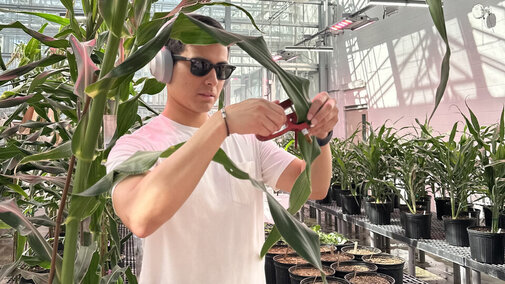The genome of a corn plant contains almost 40,000 genes, thousands more than the human genome. But 15 years after the publication of the first draft of the corn genome, the roles 98% of those genes play in making a corn plant or determining how corn will respond to different growing conditions remain unknown.
Conventional methods to figure out the job of each gene have proven slow and expensive, but Husker scientists have taken a major step forward in identifying the function of corn genes. The work was led by Vladimir Torres-Rodriguez, a postdoctoral associate working with James Schnable, a professor and corn genetics specialist in the University of Nebraska–Lincoln’s Department of Agronomy and Horticulture.
Their findings, recently published in The Plant Journal, could lead to faster creation of more resilient corn varieties and broader producer access to improved crops by identifying the functions of individual corn genes more rapidly and accurately. Torres-Rodriguez is lead author of the paper, “Population-level gene expression can repeatedly link genes to functions in maize.”
The technique he developed and tested with the team of corn-focused researchers from the Schnable lab uses RNA rather than DNA. This innovative approach identified about 10 times as many corn genes affecting flowering time than widely used DNA-based methods for identifying genes.

